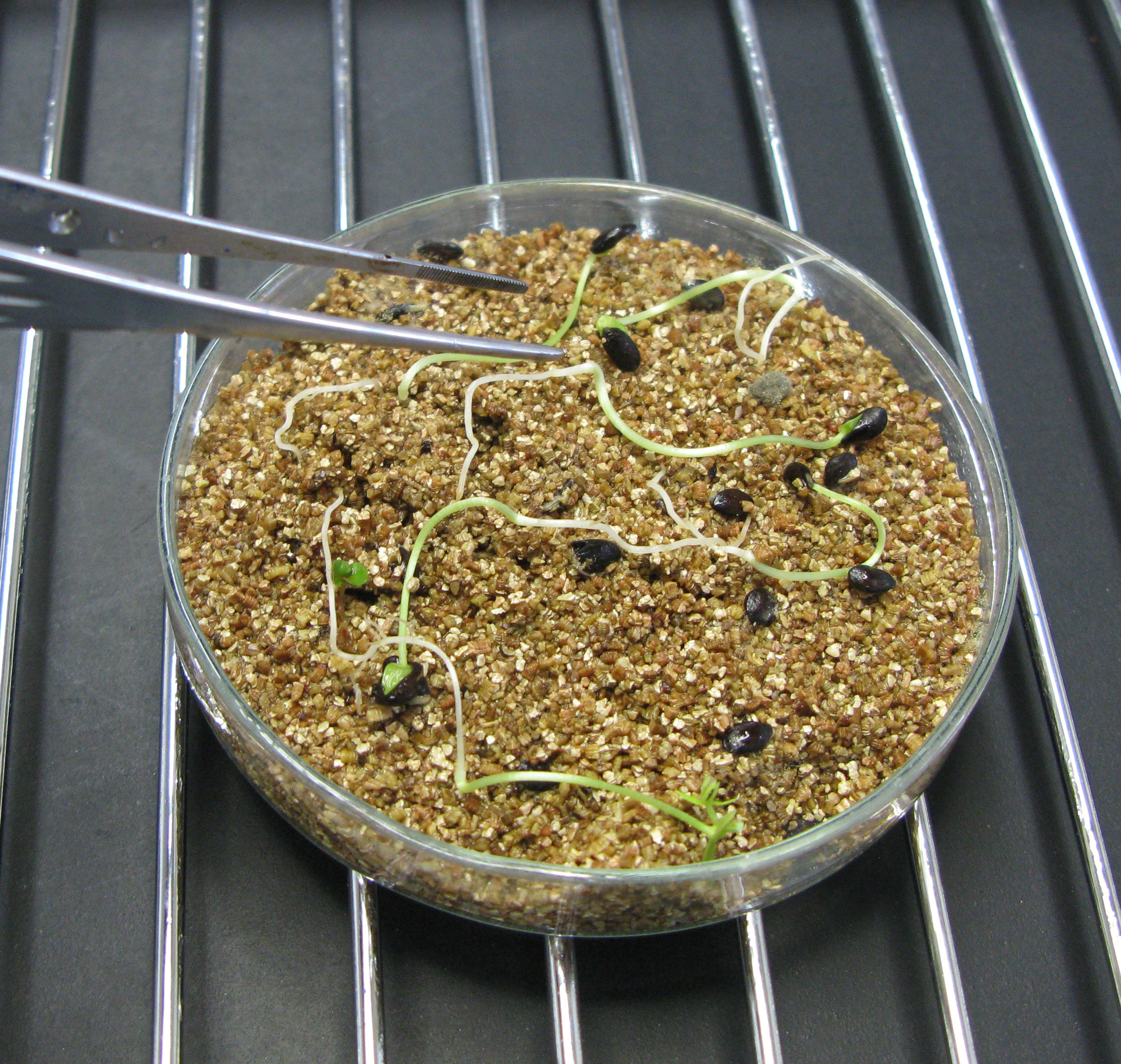 Mean number of germinants per 10 grams of seed are listed for all species that have been tested at the ATSC as well as any recommended pre-treatment that may be required prior to sowing. These provide a valuable guide for growers.
Mean number of germinants per 10 grams of seed are listed for all species that have been tested at the ATSC as well as any recommended pre-treatment that may be required prior to sowing. These provide a valuable guide for growers.
Seed germination is one criterion used for seed quality evaluation and a germination standard gives users a guide as to the number of germinants they can expect from a given weight of seeds. These figures are averages derived from germination tests that are carried out in controlled environmental conditions. The methods used for seed testing at the ATSC are based on the principles of accuracy and reproducibility described by the International Seed Testing Association (ISTA) rules.
At the ATSC we provide the average number of germinants you could expect to grow from 10 grams of seed. For large-seeded species such as acacias where you can count out and test a known number of seeds this can also be expressed as percentage germination. However, many eucalypts are difficult to separate from their chaff so these are tested by the weight method. Buyers may therefore elect to buy either a weight of seed or a specific number of viable seeds.
All seed entering the ATSC seed store is given an initial germination test and it is these figures that have been used to build our germination standards. As well as providing the average number of viable seeds per 10 grams for a species, the standard also provides information on the number of seedlots that have been tested to give that result, giving and idea of reliability of the results. Also provided are details of germination pre-treatments routinely applied and the temperature at which seed was tested. For many seedlots the pre-treatments need to be applied to achieve satisfactory germination so this information should be carefully considered.
Each seedlot is periodically re-tested so that up-to-date germination figures are available.
It is important for users of germination information to realise that the given figures may not be replicated when growing seed outside of sterile laboratory conditions: normally somewhat lower germination figures are achievable except by very tightly managed commercial nurseries. However, they do provide a good indication of what you can expect. When you purchase seed from the ATSC you will receive both the viability test result and pre-treatment advice for that specific seedlot.
Mean number of germinants per 10 grams of seed are listed for all species that have been tested at the ATSC as well as any recommended pre-treatment that may be required prior to sowing. These provide a valuable guide for growers.
Seed germination is one criterion used for seed quality evaluation and a germination standard gives users a guide as to the number of germinants they can expect from a given weight of seeds. These figures are averages derived from germination tests that are carried out in controlled environmental conditions. The methods used for seed testing at the ATSC are based on the principles of accuracy and reproducibility described by the International Seed Testing Association (ISTA) rules.
At the ATSC we provide the average number of germinants you could expect to grow from 10 grams of seed. For large-seeded species such as acacias where you can count out and test a known number of seeds this can also be expressed as percentage germination. However, many eucalypts are difficult to separate from their chaff so these are tested by the weight method. Buyers may therefore elect to buy either a weight of seed or a specific number of viable seeds.
All seed entering the ATSC seed store is given an initial germination test and it is these figures that have been used to build our germination standards. As well as providing the average number of viable seeds per 10 grams for a species, the standard also provides information on the number of seedlots that have been tested to give that result, giving and idea of reliability of the results. Also provided are details of germination pre-treatments routinely applied and the temperature at which seed was tested. For many seedlots the pre-treatments need to be applied to achieve satisfactory germination so this information should be carefully considered.
Each seedlot is periodically re-tested so that up-to-date germination figures are available.
It is important for users of germination information to realise that the given figures may not be replicated when growing seed outside of sterile laboratory conditions: normally somewhat lower germination figures are achievable except by very tightly managed commercial nurseries. However, they do provide a good indication of what you can expect. When you purchase seed from the ATSC you will receive both the viability test result and pre-treatment advice for that specific seedlot.
